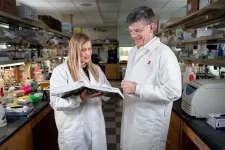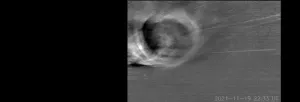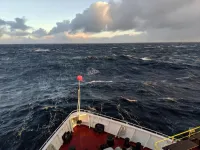(Press-News.org) A systematic review of 35 years of global medical literature finds a spectrum of reasons why people sell kidneys. The study, by Bijaya Shrestha of the Center for Research on Education, Health and Social Science, Kathmandu, Nepal, finds limited efforts toward mitigating the problem as well as a lack of evidence around the impact of policy and biotechnology. It is published in the open access journal PLOS Global Public Health.
Demand for kidney donation is higher than supply, and it has become one of the most saleable human organs, with kidney selling a global phenomenon. Illegal organ donation often takes advantage of vulnerable people and carries medical, social, psychological, and legal risks. Bijaya Shrestha and colleagues wanted to explore the reasons why people sell their kidneys and conducted a systematic review of relevant medical literature from around the world.
Poverty is the main reason cited, but lack of information, debt, using the payment to buy items such as motorbikes, phones, extra land, desire for financial freedom and altruism are also reported. At a societal level, studies highlight the influence of family and social norms. Fulfilling family demands can be rooted in social conformism, and studies report that men sometimes resort to selling their organs to acquire money for dowry, while women sell their organs due to the physical labour expected of men in their families.
There was regional variation too. Poverty was the primary reason among individuals from the Indian Subcontinent. In Bangladesh, Nepal, India and the Philippines, brokers play a significant role in connecting potential sellers and buyers. A few studies in India and the Philippines reported how cities with advanced medical facilities actually facilitated kidney trade by serving as a meeting point for donors and recipients.
The authors also highlight the shortcomings of policies in addressing the challenges of kidney selling and cross-border organ trafficking.
The authors add: "Though the economy looks like the major reason for kidney selling, there are multiple reasons for kidney selling. This paper explores different facets of kidney selling."
#####
In your coverage please use this URL to provide access to the freely available article in PLOS Global Public Health: https://journals.plos.org/globalpublichealth/article?id=10.1371/journal.pgph.0003015
Citation: Shrestha B, Sringernyuang L, Shrestha M, Shrestha B, Adhikari A, Sunuwar DR, et al. (2024) Why do people sell their kidneys? A thematic synthesis of qualitative evidence. PLOS Glob Public Health 4(3): e0003015. https://doi.org/10.1371/journal.pgph.0003015
Author Countries: Australia, Nepal, Thailand
Funding: The authors received no specific funding for this work.
END
Understanding why people sell their kidneys
Poverty is the main reason people sell a kidney but there are other factors, and regional variation
2024-03-27
ELSE PRESS RELEASES FROM THIS DATE:
Researchers turn back the clock on cancer cells to offer new treatment paradigm
2024-03-27
St. Jude Children’s Research Hospital scientists reversed an aggressive cancer, reverting malignant cells towards a more normal state. Rhabdoid tumors are an aggressive cancer which is missing a key tumor suppressor protein. Findings showed that with the missing tumor suppressor, deleting or degrading the quality control protein DCAF5 reversed the cancer cell state. These results suggest a new approach to curing cancer — returning cancerous cells to an earlier, more normal state rather than killing cancer cells with toxic therapies — may be possible. The results were published today in Nature.
“Rather than making a toxic event that kills rhabdoid ...
SwRI leads airborne, ground-based 2024 eclipse observation projects
2024-03-27
SAN ANTONIO — March 27, 2024 —Southwest Research Institute is leading two groundbreaking experiments — on the ground and in the air — to collect astronomical data from the total solar eclipse that will shadow a large swath of the United States on April 8, 2024. SwRI’s Dr. Amir Caspi leads the Citizen Continental-America Telescopic Eclipse (CATE) 2024 experiment, a broad scientific outreach initiative funded by the National Science Foundation (NSF) and NASA, that will ...
Lighting up the future
2024-03-27
New multidisciplinary research from the University of St Andrews could lead to more efficient televisions, computer screens and lighting.
Researchers at the Organic Semiconductor Centre in the School of Physics and Astronomy, and the School of Chemistry have proposed a new approach to designing efficient light-emitting materials in a paper published this week in Nature (27 March).
Light-emitting materials are used in organic light-emitting diodes (OLEDs) that are now found in the majority of mobile ...
Sweet success: researchers crack sugarcane’s complex genetic code
2024-03-27
Modern hybrid sugarcane is one of the most harvested crops on the planet, used to make products including sugar, molasses, bioethanol, and bio-based materials. It also has one of the most complex genetic blueprints.
Until now, sugarcane’s complicated genetics made it the last major crop without a complete and highly accurate genome. Scientists have developed and combined multiple techniques to successfully map out sugarcane’s genetic code. With that map, they were able to verify the specific location that provides resistance to the impactful brown rust disease ...
WISPR team images turbulence within solar transients for the first time
2024-03-27
WASHINGTON — The Wide-field Imager for Parker Solar Probe (WISPR) Science Team, led by the U.S. Naval Research Laboratory (NRL), captured the development of turbulence as a Coronal Mass Ejection (CME) interacted with the ambient solar wind in the circumsolar space. This discovery is reported in the Astrophysical Journal.
Taking advantage of its unique location inside the Sun’s atmosphere, the NRL-built WISPR telescope on NASA’s Parker Solar Probe (PSP) mission, operated by the Johns Hopkins University Applied Physics Laboratory (JHUAPL), captured in unparalleled detail the interaction between ...
Undocumented immigrants faced unique mental health challenges during COVID-19 pandemic
2024-03-27
Four years after the U.S. shut down in the face of the COVID-19 pandemic, research from Rice University suggests undocumented immigrants’ mental health challenges were compounded due to stresses stemming from their unauthorized status.
“Implications of Undocumented Status for Latinx Families During the COVID-19 Pandemic: A Call to Action” appears in the Journal of Clinical Child & Adolescent Psychology and examines how undocumented immigrants navigated the COVID-19 pandemic.
During a series of in-depth interviews with undocumented individuals or those from ...
Old immune systems revitalized in Stanford Medicine mouse study, improving vaccine response
2024-03-27
Planes, trains, boats, automobiles and even feet. During the past decades and centuries, global travel and human migration have made all of us more worldly — from our broadening awareness of the world beyond our birthplaces, to our more sophisticated palates, to our immune systems that are increasingly challenged by unfamiliar bacteria and viruses.
In the elderly, these newly imported pathogens can gain the upper hand frighteningly quickly. Unfortunately, however, vaccination in this age group isn’t as effective as it is in younger people.
Now a study conducted in mice by Stanford ...
Discovery has potential to solve the billion-dollar global cost of poorly managed wound healing
2024-03-27
Scientists have uncovered a key step in the wound healing process that becomes disabled in diseases like diabetes and ageing, contributing to a global healthcare cost of managing poorly healing wounds exceeding $250 billion a year. Importantly, the research published in Nature reveals a molecule involved in the healing of tissues that – when injected into animal models – leads to a drastic acceleration of wound closure, up to 2.5 times faster, and 1.6 times more muscle regeneration.
Lead researcher, Associate Professor Mikaël Martino, from Monash University’s Australian Regenerative Medicine Institute (ARMI) in Melbourne, Australia, said the discovery ...
Newly uncovered history of a key ocean current carries a warning on climate
2024-03-27
It carries more than 100 times as much water as all the world's rivers combined. It reaches from the ocean's surface to its bottom, and measures as much as 2,000 kilometers across. It connects the Indian, Atlantic and Pacific oceans, and plays a key role in regulating global climate. Continuously swirling around the southernmost continent, the Antarctic Circumpolar Current is by far the world's most powerful and consequential mover of water. In recent decades it has been speeding up, but scientists have been unsure whether ...
Evolution of the most powerful ocean current on Earth
2024-03-27
The Antarctic Circumpolar Current plays an important part in global overturning circulation, the exchange of heat and CO2 between the ocean and atmosphere, and the stability of Antarctica’s ice sheets. An international research team led by the Alfred Wegener Institute and the Lamont-Doherty Earth Observatory have now used sediments taken from the South Pacific to reconstruct the flow speed in the last 5.3 million years. Their data show that during glacial periods, the current slowed; during interglacials, it accelerated. Consequently, if ...
LAST 30 PRESS RELEASES:
Injectable breast ‘implant’ offers alternative to traditional surgeries
Neuroscientists devise formulas to measure multilingualism
New prostate cancer trial seeks to reduce toxicity without sacrificing efficacy
Geometry shapes life
A CRISPR screen reveals many previously unrecognized genes required for brain development and a new neurodevelopmental disorder
Hot flush treatment has anti-breast cancer activity, study finds
Securing AI systems against growing cybersecurity threats
Longest observation of an active solar region
Why nail-biting, procrastination and other self-sabotaging behaviors are rooted in survival instincts
Regional variations in mechanical properties of porcine leptomeninges
Artificial empathy in therapy and healthcare: advancements in interpersonal interaction technologies
Why some brains switch gears more efficiently than others
UVA’s Jundong Li wins ICDM’S 2025 Tao Li Award for data mining, machine learning
UVA’s low-power, high-performance computer power player Mircea Stan earns National Academy of Inventors fellowship
Not playing by the rules: USU researcher explores filamentous algae dynamics in rivers
Do our body clocks influence our risk of dementia?
Anthropologists offer new evidence of bipedalism in long-debated fossil discovery
Safer receipt paper from wood
Dosage-sensitive genes suggest no whole-genome duplications in ancestral angiosperm
First ancient human herpesvirus genomes document their deep history with humans
Why Some Bacteria Survive Antibiotics and How to Stop Them - New study reveals that bacteria can survive antibiotic treatment through two fundamentally different “shutdown modes”
UCLA study links scar healing to dangerous placenta condition
CHANGE-seq-BE finds off-target changes in the genome from base editors
The Journal of Nuclear Medicine Ahead-of-Print Tip Sheet: January 2, 2026
Delayed or absent first dose of measles, mumps, and rubella vaccination
Trends in US preterm birth rates by household income and race and ethnicity
Study identifies potential biomarker linked to progression and brain inflammation in multiple sclerosis
Many mothers in Norway do not show up for postnatal check-ups
Researchers want to find out why quick clay is so unstable
Superradiant spins show teamwork at the quantum scale
[Press-News.org] Understanding why people sell their kidneysPoverty is the main reason people sell a kidney but there are other factors, and regional variation







